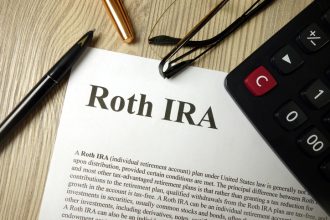Pensions and 403(b) plans represent two distinct ways to save for retirement, each with its own structure and advantages. A pension provides a predictable income stream in retirement, usually funded and managed by an employer. A 403(b), on the other hand, relies on employee contributions and investment growth, giving individuals more control but also more exposure to market risk. Comparing these options highlights how retirement benefits can differ depending on the plan offered.
Pension vs. 403(b): How Each Works
A pension is a retirement plan in which an employer promises to pay a fixed stream of income after an employee stops working. The amount is typically based on a formula that considers factors such as salary history and years of service. Employers are responsible for funding the plan and managing the investments, while employees receive regular payments in retirement, often for life. This structure shifts investment and longevity risk away from the worker and onto the employer.
A 403(b) plan, by contrast, is a tax-advantaged retirement account available to employees of certain nonprofits, public schools and religious organizations. Workers contribute a portion of their salary on a pre-tax basis, and those funds grow tax-deferred until they’re withdrawn. Employers may also make matching or discretionary contributions, though this is not guaranteed. The employee chooses how to invest the contributions, usually from a menu of mutual funds or annuity contracts. Withdrawals in retirement are treated as ordinary income, and distributions before age 59 ½ may be subject to penalties.
Both structures aim to provide income in retirement. But the way contributions are made, investments are managed and benefits are distributed varies significantly between the two.
Pros and Cons of a Pension

Pension plans offer unique advantages but also carry certain limitations. Understanding both sides helps clarify what these plans can realistically provide in retirement.
Pros
- Guaranteed income: One of the main advantages of a pension is the promise of steady payments throughout retirement. This predictable income stream reduces uncertainty, since retirees do not have to rely on market performance or personal investment decisions.
- Employer responsibility: With pensions, the employer takes on the responsibility of funding and managing the plan. This relieves employees from the task of making investment choices or monitoring market conditions, while still providing long-term financial support.
- Longevity protection: Many pensions are structured to pay benefits for life. This protects retirees from outliving their savings, a challenge that individuals often face when relying solely on personal investment accounts.
Cons
- Limited flexibility: On the downside, pensions offer little control over contributions or investment decisions. Employees generally cannot adjust how the money is managed or access funds early without restrictions.
- Employer risk and less availability: Pensions are less common today, and the benefits depend heavily on the employer’s financial stability. If a company reduces or freezes its plan, future payouts could be lower than expected. This reliance on the employer makes pensions less accessible than other retirement savings options.
Pros and Cons of a 403(b)
A 403(b) plan gives employees a way to build retirement savings through tax advantages and investment growth. Like any retirement account, it comes with both potential benefits and drawbacks.
Pros
- Tax benefits: Contributions to a 403(b) are made on a pre-tax basis, reducing taxable income in the year they are made. The investments then grow tax-deferred until withdrawals in retirement. This structure can help workers save more over time by delaying the tax bill until retirement, when their income may be lower.
- Investment control: Participants choose how their contributions are invested, typically among mutual funds or annuity products. This allows individuals to tailor their portfolio to match their own risk tolerance and goals. However, the range of investment options is often narrower than what is available through an IRA.
- Potential employer contributions: Some employers offer matching or discretionary contributions, which can significantly boost retirement savings. The availability and size of these contributions vary widely, though. In workplaces that do not provide a match, employees must rely solely on their own contributions for growth.
Cons
- Market risk: Because 403(b) plan growth depends on investment performance, there is no guaranteed return. Poor market conditions or suboptimal investment choices can reduce the value of the account. This means retirees face uncertainty about how much income their savings will ultimately provide.
- Early withdrawal penalties: Accessing funds before age 59 ½ generally incurs taxes and penalties. This makes 403(b) plans less flexible for those who may need liquidity before retirement. While exceptions exist for hardship withdrawals, these often come with strict requirements.
Pension vs. 403(b): Key Differences
Pensions operate as defined benefit plans, where the employer takes on funding and investment responsibility in exchange for promising fixed retirement payments. A 403(b) is a defined contribution plan that shifts control and risk to the employee, who determines how much to save and how to invest. This difference in structure is the foundation for how each plan shapes retirement outcomes.
| Feature | Pension | 403(b) |
|---|---|---|
| Funding and Contributions | Funded primarily by the employer, with benefit formulas tied to salary and years of service | Funded mainly by employee contributions, often with optional employer matches |
| Investment Control | Managed by the employer or plan sponsor, with no input from the employee | Employees choose from a menu of investments, typically mutual funds or annuities |
| Income in Retirement | Provides a guaranteed monthly income, usually for life | Retirement income depends on account balance and investment performance |
| Risk Allocation | Employer carries the investment and longevity risk | Employee bears the investment risk and the challenge of making savings last |
| Availability | Less common today, mainly offered by government employers and certain large organizations | Available to employees of public schools, nonprofits and some religious institutions |
Bottom Line

Choosing between a pension and a 403(b) comes down to how retirement income is structured and who carries the risk. One option centers on guaranteed payments funded by an employer, while the other relies on individual contributions and market growth. Both can play a role in long-term planning, depending on workplace benefits, personal savings habits and retirement goals.
Retirement Planning Tips
- A financial advisor can help refine your plan as circumstances change, whether through shifting tax laws, unexpected expenses or evolving goals. Finding a financial advisor doesn’t have to be hard. SmartAsset’s free tool matches you with vetted financial advisors who serve your area, and you can have a free introductory call with your advisor matches to decide which one you feel is right for you. If you’re ready to find an advisor who can help you achieve your financial goals, get started now.
- If you retire before claiming Social Security, you can use portfolio withdrawals or part-time income to “bridge” the gap. This allows you to delay claiming benefits until later, which increases your monthly payout and provides stronger inflation protection.
Photo credit: ©iStock.com/pinkomelet, ©iStock.com/tumsasedgars, ©iStock.com/designer491
Read the full article here














